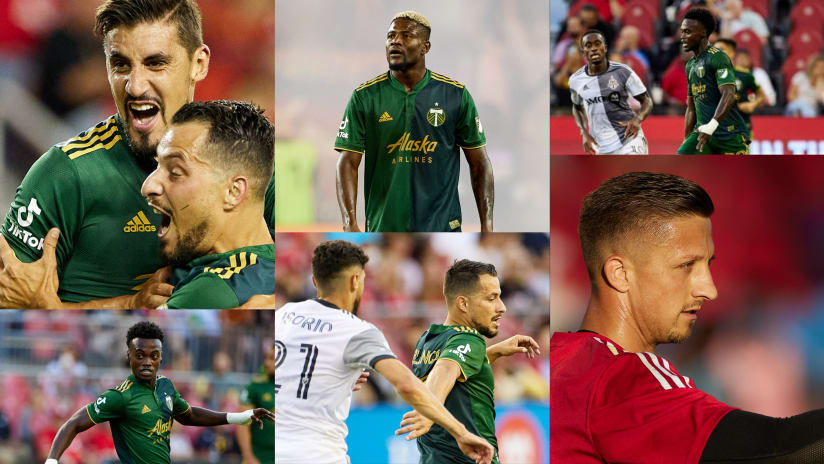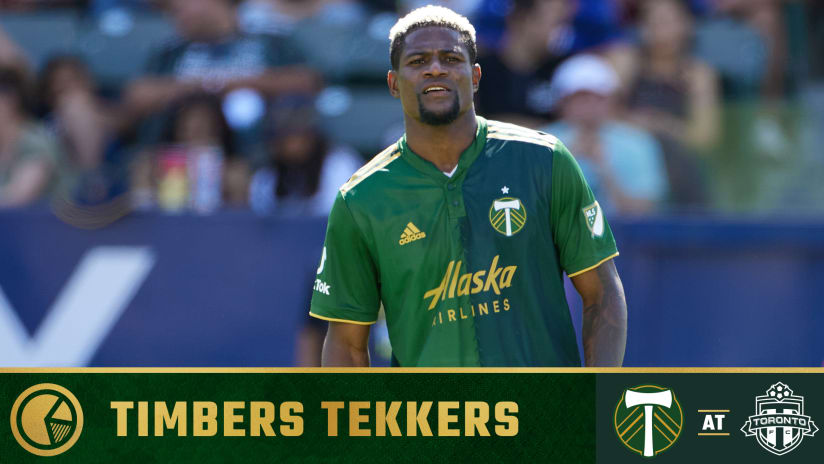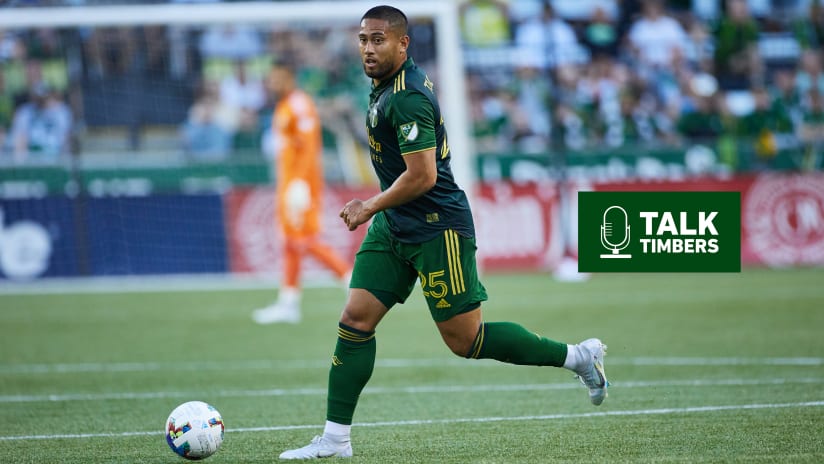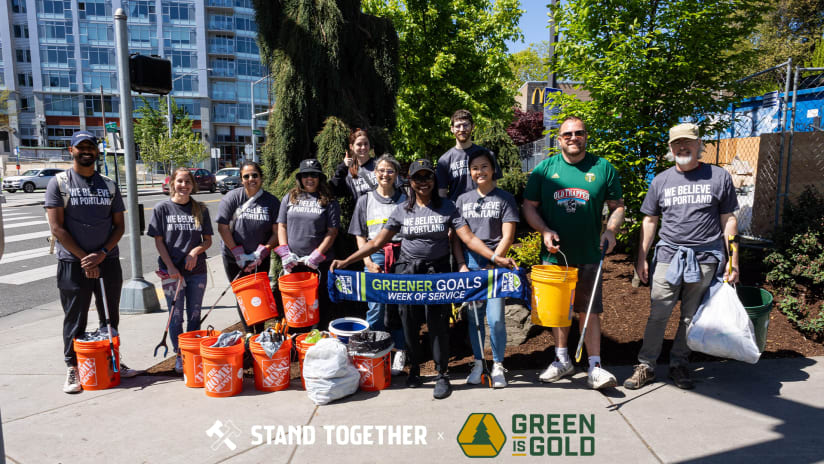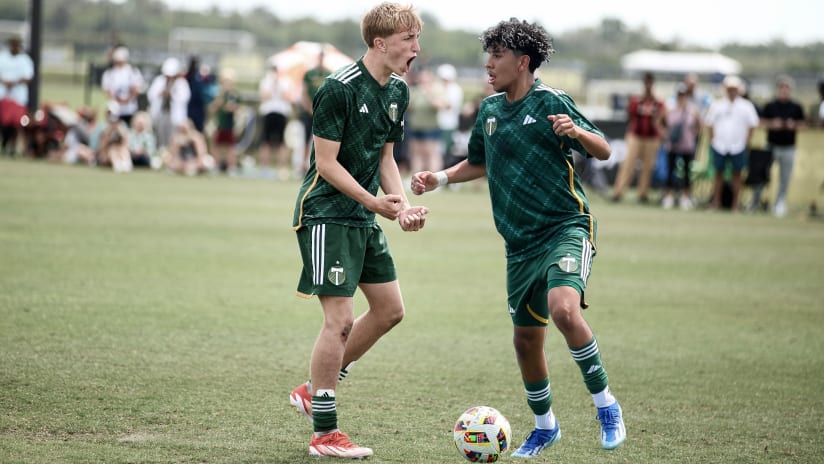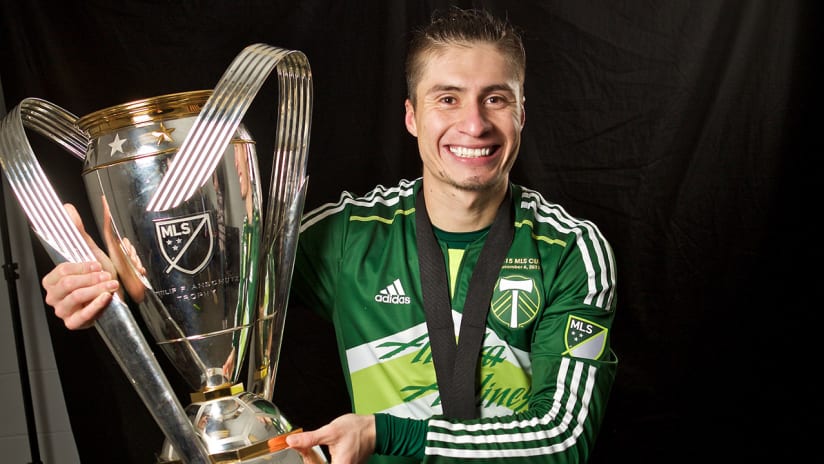Welcome to the first of eight Timbers.com and ThornsFC.com's series of posts combing through the depth charts of both the Timbers and Thorns, assessing where each team’s roster sits at the beginning of the offseason. We start in the National Women’s Soccer League’s world, and with a place where the biggest questions loom over the Thorns’ roster.
Rostered forwards (in alphabetical order): Simone Charley, Caitlin Foord, Tobin Heath, Tyler Lussi, Midge Purce, Hayley Raso, Christine Sinclair
How many forwards do the Portland Thorns need? Because that list, above? It feels long (and star-studded) enough.
I start with that question – something, like a personal pronoun, I try to avoid at the beginning of posts – because it feels like the most important one. It might not be the first one that comes to mind, but when you start thinking through the team’s attacking options, you inevitably come back to quantity, end if the team’s last month forces us to begin someplace else.
So, let’s go ahead and live in that someplace else for a moment. In terms of the team’s end-of-season results, the answer to “how many” like it should be a point of snark. “Well, at least one” is the obvious response. You don’t close a year with a single goal in six games and feel good about your attack. No matter what you think of the names at head coach Mark Parsons’ disposal, they come with a question: How did that happen? Or, rephrased, how did that happen? The answer to that question could land the Thorns in the forward market.
But second part of this discussion does come back to that “how many,” something that has to be informed by how the team wants to play. Is this a team that’s going to build its squad around playing a 4-3-3 look, one where a forward who can work in isolation as the number nine becomes a priority. The Thorns already have a number of those. Christine Sinclair, Midge Purce, Caitlin Foord, Simone Charley and Tyler Lussi is an enviable group of talent. But, again, we sit in an offseason where questions loom about the Thorns’ attack. Would another number nine be an answer, or an extravagance? Or, should Portland be moving away from that approach?
These are the questions Parsons and team general manager Gavin Wilkinson are tackling now. Armed with the new ability to spend this offseason (the league having loosened the salary-cap reins on a pool of money each team can use), Portland has a chance to leverage its unmatched drawing power. The NWSL-curious spread across the women’s soccer globe? Portland might actually be able to sign you, now, part of the reason there may be multiple players on the team’s offseason wish list. How high is “forward” among those priorities?
But that brings us back to the system. Portland finished the year playing a two-front (two forwards), one with Sinclair and Tobin Heath starting up top. That look would also allow Hayley Raso to be considered more of a forward than wing option – something that makes the position’s depth chart even more imposing. In a two-forward attack, where talents like Heath, Sinclair and Raso are among your starting options, you start to ask whether a major update is even possible, as well as what that upgrade would do. Solutions, then, start to look more internal.
There is also the player development angle to consider. Purce, in particular, took a huge step forward last year. There’s an argument to be made that, for her, another step’s to come. Caitlin Foord, too, based on her pre-World Cup form, is somebody who could be better in 2020 than 2019. Raso stands to be healthier, while Simone Charley, as she’s showing while on loan in Australia’s W-League now, is still approaching what Simone Charley will become. Some of that falls under player development, some of it is health, but all of it is internal improvement. As much as we want to focus on the season’s last six games, there’s a very realistic world where Portland’s players perform better, fits are given more time to develop, and the Thorns’ attacking woes are less definitions than aberrations.
Even in that scenario, though, we can’t forget the larger arc of the NWSL, one that forces each team to take heed. The demands on your teams’ play increase each season. What was good enough to make the playoffs two, three years ago might not be good enough to contend now. If a team like the Thorns go into an offseason trying to get last year’s team on course, they risk, even in their best-case scenario, being left in the past. Teams need to be in constant search of solutions.
That brings us to the third part of this discussion: the subtext. There’s an expectation that comes with the Thorns’ identity, one that demands at least competing for titles. That didn’t truly happen last season. After game 25, the team seemed off, and for the first time in four years, it felt like there was a need for major solutions. There’s now an urgency with the team that hasn’t existed since the 2015 season. The team has to get better.
It would be unfair to say Portland doesn’t have the tools on the roster, right now, to make that improvement. But it would also be unfair to overlook how 2019 ended. Maybe it’s not a matter of having a huge talent boost, when it comes to the forward pool; maybe it’s a matter of having more and different options; or, maybe it’s a matter of, when you need to find new solutions on the fly, having enough tools to choose from. If style and approach don’t work, and if internal improvement may only go so far, what other options do you have? Because you know, no matter what, an improving league is going to give you new problems to solve.
That, as much as the season just ended, may define the Thorns’ depth chart over the next four months, at forward and beyond.



